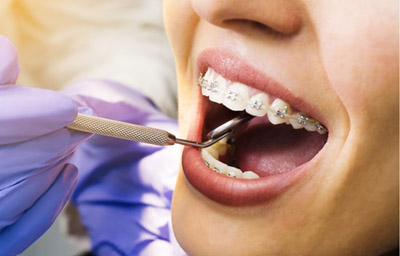The Facts About Causey Orthodontics Revealed
Table of ContentsNot known Details About Causey Orthodontics 8 Simple Techniques For Causey OrthodonticsWhat Does Causey Orthodontics Mean?The 7-Minute Rule for Causey OrthodonticsLittle Known Facts About Causey Orthodontics.
Overlooking occlusal relationships, it was common to eliminate teeth for a selection of dental problems, such as malalignment or congestion. The principle of an intact dentition was not extensively valued in those days, making bite correlations appear irrelevant. In the late 1800s, the principle of occlusion was crucial for developing trusted prosthetic replacement teeth.As these ideas of prosthetic occlusion progressed, it ended up being a very useful tool for dentistry. It was in 1890 that the work and impact of Dr. Edwards H. Angle began to be felt, with his payment to contemporary orthodontics particularly notable. Focused on prosthodontics, he instructed in Pennsylvania and Minnesota prior to guiding his focus in the direction of oral occlusion and the therapies required to preserve it as a normal problem, therefore becoming known as the "papa of contemporary orthodontics".

The principle of ideal occlusion, as proposed by Angle and incorporated right into a classification system, enabled a shift towards dealing with malocclusion, which is any kind of variance from typical occlusion. Having a complete collection of teeth on both arches was extremely searched for in orthodontic treatment because of the demand for exact relationships between them.
Little Known Questions About Causey Orthodontics.
As occlusion ended up being the key top priority, facial proportions and aesthetic appeals were neglected - orthodontist near me. To achieve perfect occlusals without making use of exterior pressures, Angle proposed that having ideal occlusion was the most effective way to acquire maximum face visual appeals. With the passing away of time, it came to be rather noticeable that even a phenomenal occlusion was not ideal when thought about from an aesthetic perspective
Charles Tweed in America and Raymond Begg in Australia (that both researched under Angle) re-introduced dentistry extraction into orthodontics during the 1940s and 1950s so they might boost face esthetics while additionally guaranteeing much better stability worrying occlusal partnerships. In the postwar period, cephalometric radiography started to be utilized by orthodontists for determining modifications in tooth and jaw placement created by growth and treatment. It came to be obvious that orthodontic treatment could readjust mandibular growth, bring about the formation of functional jaw orthopedics in Europe and extraoral pressure procedures in the US. These days, both practical home appliances and extraoral devices are used around the globe with the goal of amending development patterns and kinds. Going after real, or at least improved, jaw partnerships had actually ended up being the major goal of therapy by the mid-20th century.
The Facts About Causey Orthodontics Uncovered
 The American Journal of Orthodontics was created for this function in 1915; before it, there were no scientific objectives to follow, neither any type of accurate classification system and brackets that did not have features. Till the mid-1970s, braces were made by wrapping steel around each tooth. With improvements in adhesives, it ended up being feasible to instead bond metal brackets to the teeth.
The American Journal of Orthodontics was created for this function in 1915; before it, there were no scientific objectives to follow, neither any type of accurate classification system and brackets that did not have features. Till the mid-1970s, braces were made by wrapping steel around each tooth. With improvements in adhesives, it ended up being feasible to instead bond metal brackets to the teeth.Andrews offered an informative definition of the perfect occlusion in permanent teeth. This has actually had meaningful results on orthodontic treatments that are provided on a regular basis, and these are: 1. Right interarchal relationships 2. Appropriate crown angulation (suggestion) 3. Appropriate crown inclination (torque) 4. No rotations 5. Limited contact factors 6. Apartment Contour of Spee (0.02.5 mm), and based upon these principles, he discovered a treatment system called the straight-wire device system, or the pre-adjusted edgewise system.
The advantage of the style hinges on its brace and archwire combination, which needs just very little cable bending from the orthodontist or medical professional (affordable orthodontist near me). It's aptly called hereafter attribute: the angle of the port and density of the brace base eventually determine where each tooth is located with little requirement for additional control
Some Known Details About Causey Orthodontics
Both of these systems utilized similar braces for each tooth and required the bending of an archwire in three planes for locating teeth in their desired positions, with these bends dictating ultimate positionings. When it comes to orthodontic home appliances, they are divided right into two types: detachable and repaired. Detachable home appliances can be taken on and off by the patient as required.

Hence, mostly all modern-day fixed home appliances can be thought about variants on this edgewise device system. Early 20th-century orthodontist Edward Angle made a significant contribution to the world of dental care. He created 4 distinctive device systems that have been used as the basis for numerous orthodontic therapies today, barring a couple of exceptions.
About Causey Orthodontics

The wire ended in a thread, and to relocate onward, an adjustable nut was used, which permitted a rise in area. By ligation, each individual tooth was connected to this expansive archwire (affordable orthodontist near me). Due to its restricted variety of activity, Angle was not able to achieve specific tooth placing with an E-arch
These tubes held a soldered pin, which could be repositioned at each appointment in order to move them in position. Called the "bone-growing device", this contraption was supposed to urge healthier bone development as a result of its capacity for transferring force directly to the origins. Implementing it confirmed troublesome in fact.